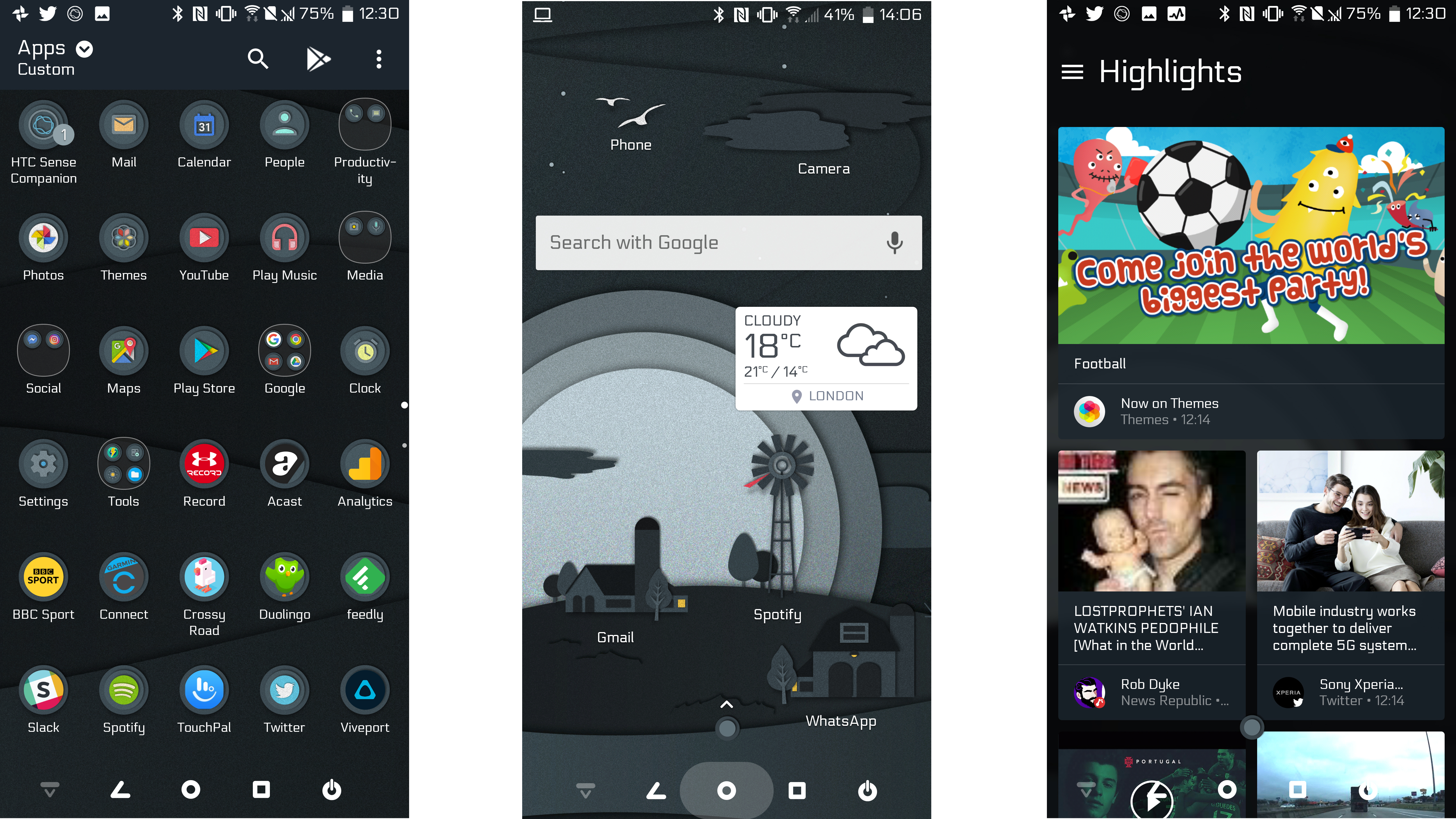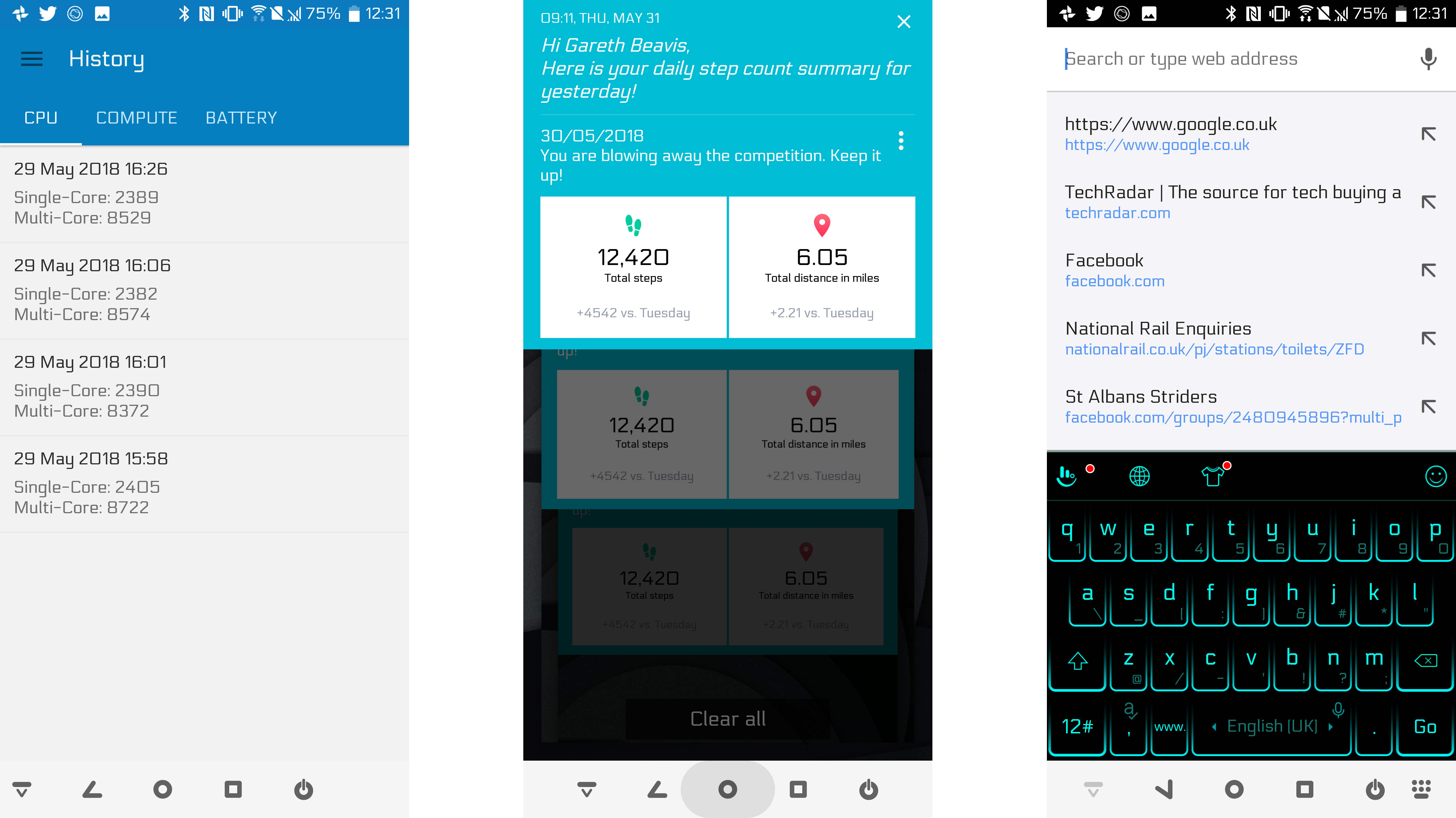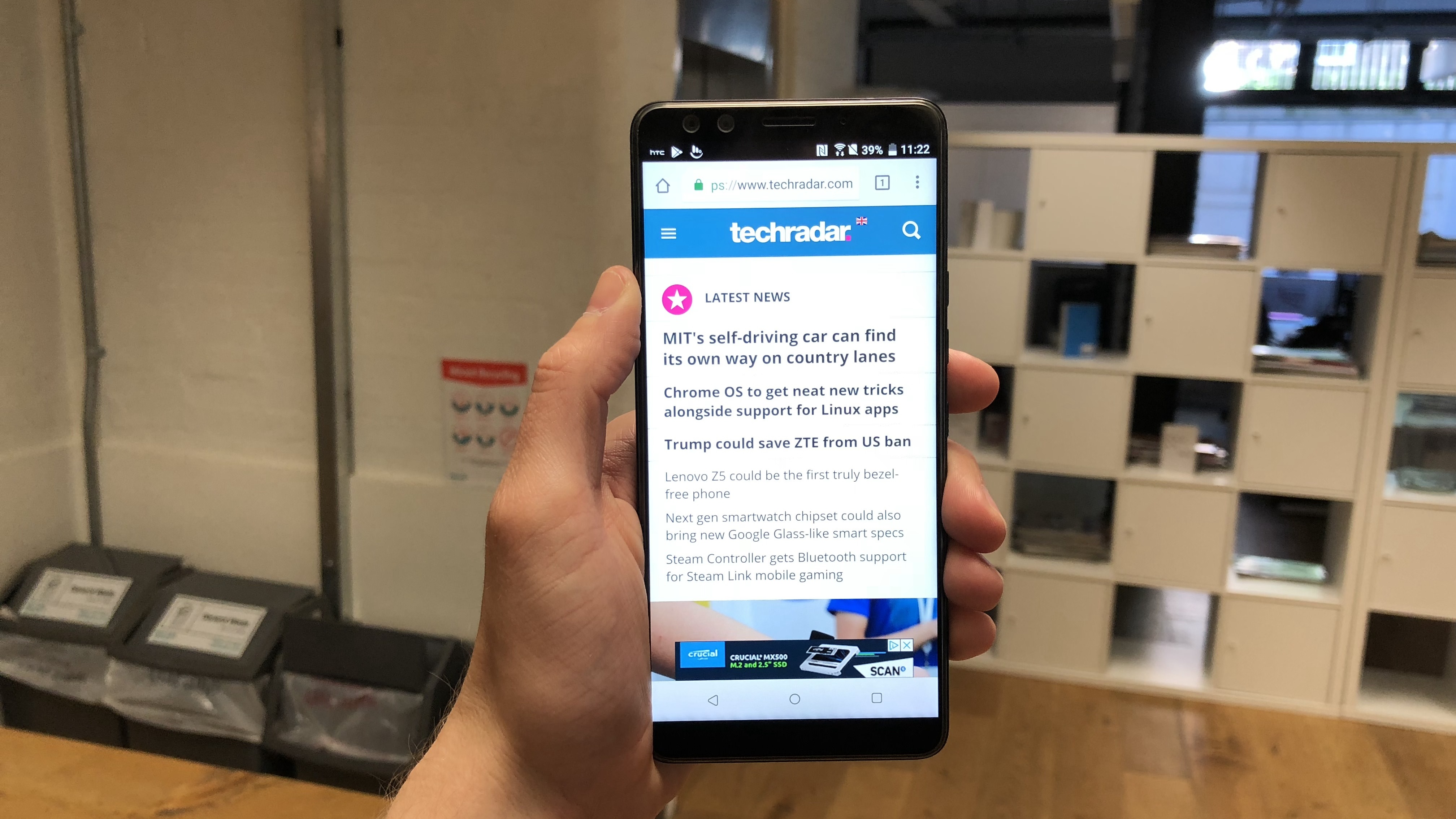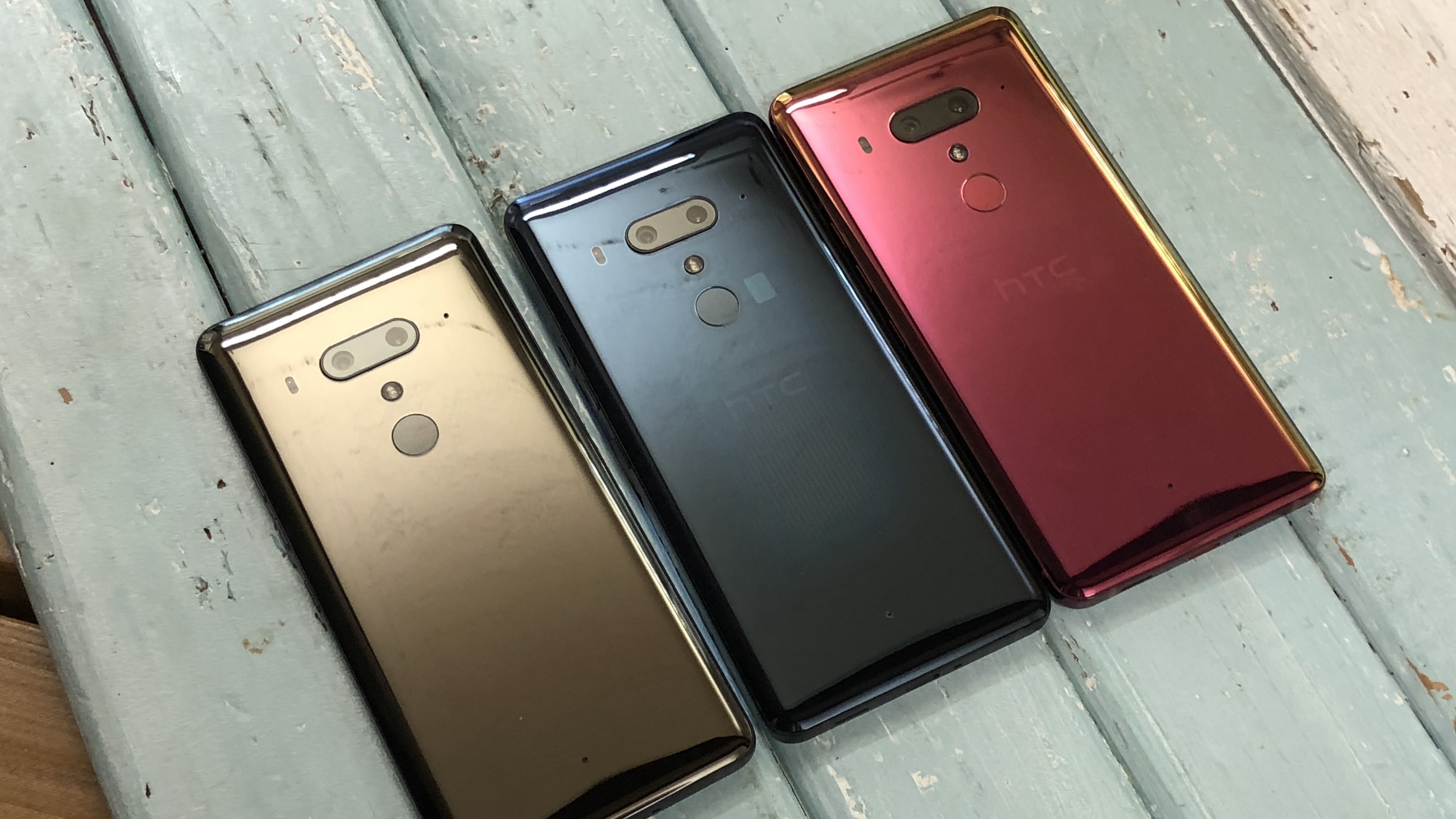Why you can trust TechRadar
- Very powerful handsets
- Still a few small bugs in the system
- Blinkfeed is a shadow of its former self
- Freestyle themes are still a nice touch
K, so we’ve gone through all the key features of the phone, but what’s it actually like to use day to day?
The first thing to note are the new security features, and we have to say we’re pretty impressed with what’s on offer. Both face unlock and fingerprint scanning are on offer to help you get into your phone, and both work really rather well.
The face scanning didn’t sound that impressive when we first saw the phone, using fewer points of recognition and not using infra red to see you in the dark. However, with the screen firing brightly for a second in the dark to help the phone see your face, it’s pretty flawless.
There are still a few misses, and more than we found with Apple’s FaceID, but it was pretty easy to default to the easily found round fingerprint scanner on the rear of the phone.
Once you’re into the phone, the interface is very similar to that found on HTC phones from years gone by. HTC Sense remains one of the cooler Android overlays, with things like Freestyle themes a unique proposition.

They’re hard to find, but when activated Freestyle themes allow you to turn apps into stickers and place them all over a landscape or picture, which is much more interesting than a boring grid of apps to look at.
The theme also extends throughout the phone, with colors and fonts changing to match as well - like we said, they’re hard to find within the phone and digging around the HTC Store is a bit of a chore, but there are some good options in there.
You’re able to whip through the HTC U12 Plus at a fair rate, with the high-end Snapdragon 845 chipset one of the fastest on the market, and 6GB of RAM more than adequate to keep things chugging away no matter what you’re throwing at it.
That’s on top of the aforementioned Boost+ app in the mix, which is designed to constantly remove junk that could be clogging things up inside.
Our Geekbench 4 tests yielded expected results - the HTC U12 Plus is one of the fastest phones on the market, but not quite the fastest. A score of 8608 is behind phones like the iPhone X, Samsung Galaxy and OnePlus 6 - and the latter is particularly telling, as it’s a much cheaper phone.
There are a few bugs in the system though - some third party apps struggle, and the U12 Plus will sometimes pause before heading back to the home screen, before rebuilding the apps layout quickly in front of your eyes.

Bluetooth streaming can sometimes cut in and out, and the AirPlay support (which is a phenomenal feature to have in a non-Apple phone) doesn’t work, crashing out despite HTC telling us it was supposed to be functional.
One of the poorer HTC throwbacks on this handset is the TouchPal keyboard, which is really starting to lag behind in terms of usability. The word prediction still has random capitalizations in there, often suggests the same wrong word and can be a bit erratic when you’re mashing your fingers into the screen.
It’s not to say that the user couldn’t stand to try and be a bit more accurate, but other phone keyboards (and even SwiftKey, which has lost its way as a standout keyboard of late) can work out what you’re trying to say more accurately.
HTC Sense companion is an interesting feature of the phone - it’s supposed to be a basic AI module inside the U12 Plus, working out little things that would help you.
Things like noting you’ve got an event that starts early in the morning and asking if you’d like an umbrella, or pointing out when power is draining fast and telling you to charge or get a power bank to make an evening appointment.
It’s also supposed to track your steps each day, along with the associated mileage and tell you how you’re doing each day… but that’s utterly terrible.
It’s completely inaccurate, with days where we’d run six or seven miles coming up as three and a half miles with a third of the steps tracked.
The signal strength could stand to be a little better, where despite being made of glass specifically to allow more data to flow in easier we found that we were struggling for a signal in more places.
This could be unfair on HTC, as it was on the train that we noticed far more connectivity black spots. It might be that other phones are just reporting a basic signal where there is none, but we definitely noticed more instances without connection.

The final thing to talk about in the interface is Blinkfeed, to the left of the main homescreen. It used to be a really nifty little place for entertainment, taking in your social networks, YouTube, calendars and news updates and presenting them in easy to read tiles.
However, the news element of this (powered by News Republic) seems rather broken. You can no longer add your topics of interest, instead being shown random nonsense from poor sources, and there are ads littering the space (ironically advertising the HTC U11).
It was a great idea when announced on the HTC One M7, and it’s sad to see it fall - it was a really diverting place when you had a few idle seconds, but now it’s just a mess and it’s a shame that you can’t replace it with something better.

Gareth has been part of the consumer technology world in a career spanning three decades. He started life as a staff writer on the fledgling TechRadar, and has grew with the site (primarily as phones, tablets and wearables editor) until becoming Global Editor in Chief in 2018. Gareth has written over 4,000 articles for TechRadar, has contributed expert insight to a number of other publications, chaired panels on zeitgeist technologies, presented at the Gadget Show Live as well as representing the brand on TV and radio for multiple channels including Sky, BBC, ITV and Al-Jazeera. Passionate about fitness, he can bore anyone rigid about stress management, sleep tracking, heart rate variance as well as bemoaning something about the latest iPhone, Galaxy or OLED TV.
